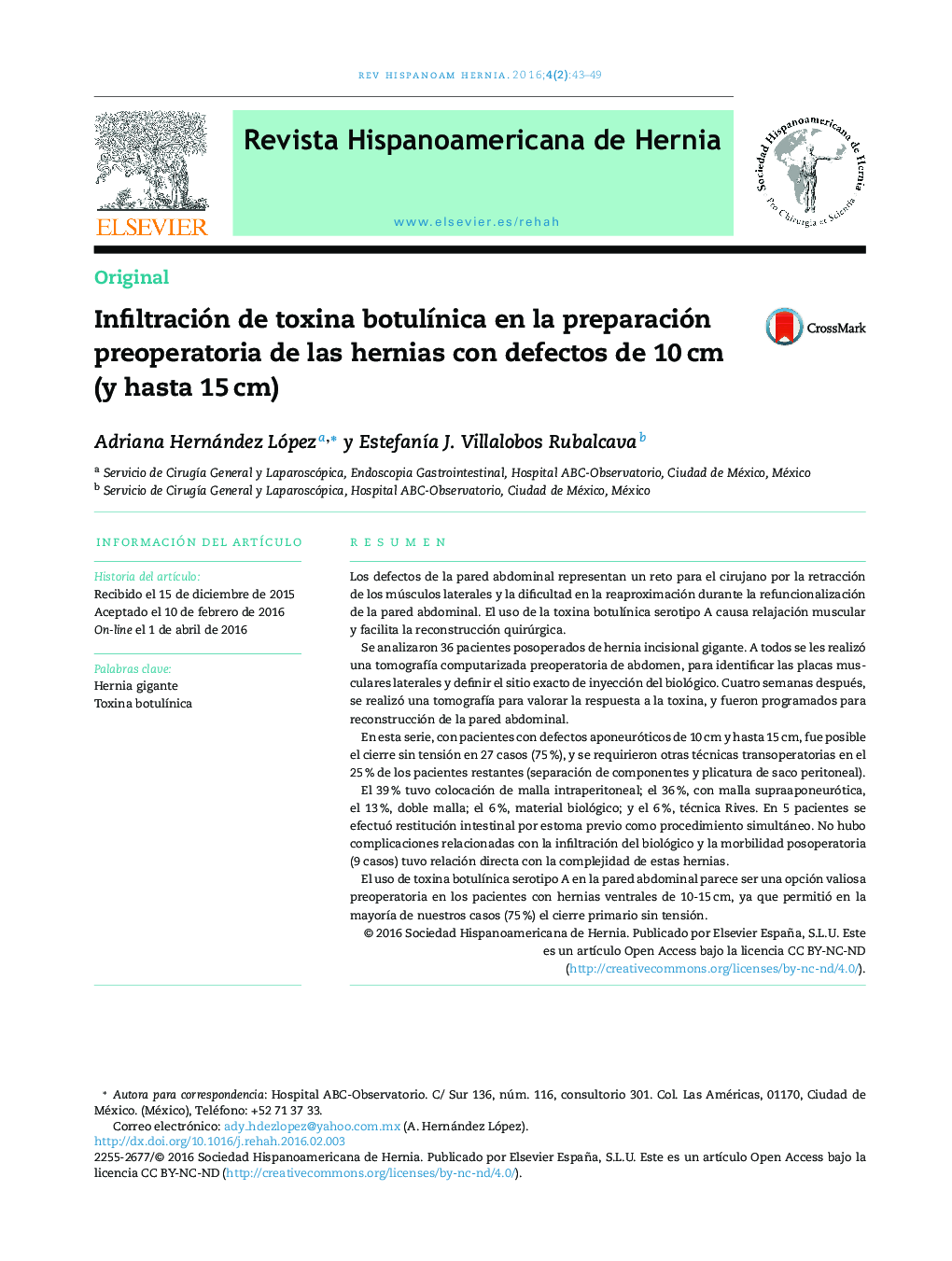| کد مقاله | کد نشریه | سال انتشار | مقاله انگلیسی | نسخه تمام متن |
|---|---|---|---|---|
| 4306034 | 1289188 | 2016 | 7 صفحه PDF | دانلود رایگان |
ResumenLos defectos de la pared abdominal representan un reto para el cirujano por la retracción de los músculos laterales y la dificultad en la reaproximación durante la refuncionalización de la pared abdominal. El uso de la toxina botulínica serotipo A causa relajación muscular y facilita la reconstrucción quirúrgica.Se analizaron 36 pacientes posoperados de hernia incisional gigante. A todos se les realizó una tomografía computarizada preoperatoria de abdomen, para identificar las placas musculares laterales y definir el sitio exacto de inyección del biológico. Cuatro semanas después, se realizó una tomografía para valorar la respuesta a la toxina, y fueron programados para reconstrucción de la pared abdominal.En esta serie, con pacientes con defectos aponeuróticos de 10 cm y hasta 15 cm, fue posible el cierre sin tensión en 27 casos (75 %), y se requirieron otras técnicas transoperatorias en el 25 % de los pacientes restantes (separación de componentes y plicatura de saco peritoneal).El 39 % tuvo colocación de malla intraperitoneal; el 36 %, con malla supraaponeurótica, el 13 %, doble malla; el 6 %, material biológico; y el 6 %, técnica Rives. En 5 pacientes se efectuó restitución intestinal por estoma previo como procedimiento simultáneo. No hubo complicaciones relacionadas con la infiltración del biológico y la morbilidad posoperatoria (9 casos) tuvo relación directa con la complejidad de estas hernias.El uso de toxina botulínica serotipo A en la pared abdominal parece ser una opción valiosa preoperatoria en los pacientes con hernias ventrales de 10-15 cm, ya que permitió en la mayoría de nuestros casos (75 %) el cierre primario sin tensión.
Abdominal wall defects represent a challenge for surgeons because of lateral muscle retraction and the difficulty of the reapproximation during refunctionalization of the abdominal wall. The use of botulinum toxin type A for muscle relaxation is a method that facilitates surgical reconstruction.Thirty six patients who had undergone giant incisional hernia repair were included in the study. A preoperative abdominal computed tomography scan was performed on all of them to identify the lateral abdominal wall muscles and determine the exact point where to infiltrate the Botulinum toxin type A. Four weeks later they underwent a computed tomography scan to control toxin response and they were scheduled for surgical reconstruction of the abdominal wall.In this series of patients with aponeurotic defects sized between 10 and 15 , closure without tension was successful in 27 cases (75 %), other perioperative techniques were required in 25 % of the remaining patients (component separation and sac plication).The mesh was used in different levels: 39 % IPOM, 36 % Onlay, 13 % with 2 layers of mesh (Sandwich-technique), 6 % Inlay and 6 % with Rives’ technique. In 5 patients restoration of intestinal continuity due to previous stoma was performed as a simultaneous procedure. There were no complications related to the infiltration of the toxin, and postoperative morbidity (9 cases) was directly related to the complexity of those hernias.We consider that the use of botulinum toxin type A in the abdominal wall is a useful tool for preparation for patients with 10-15 cm ventral hernias, since it allowed primary closure without tension in most (75 %) of our cases.
Journal: Revista Hispanoamericana de Hernia - Volume 4, Issue 2, April–June 2016, Pages 43–49
